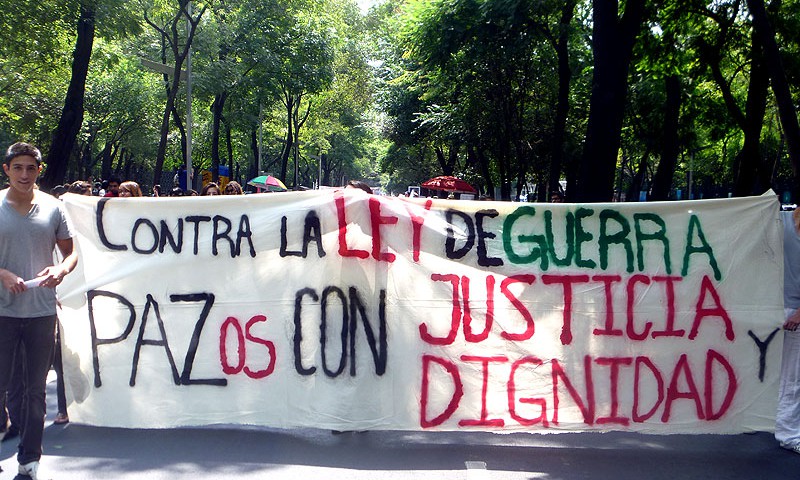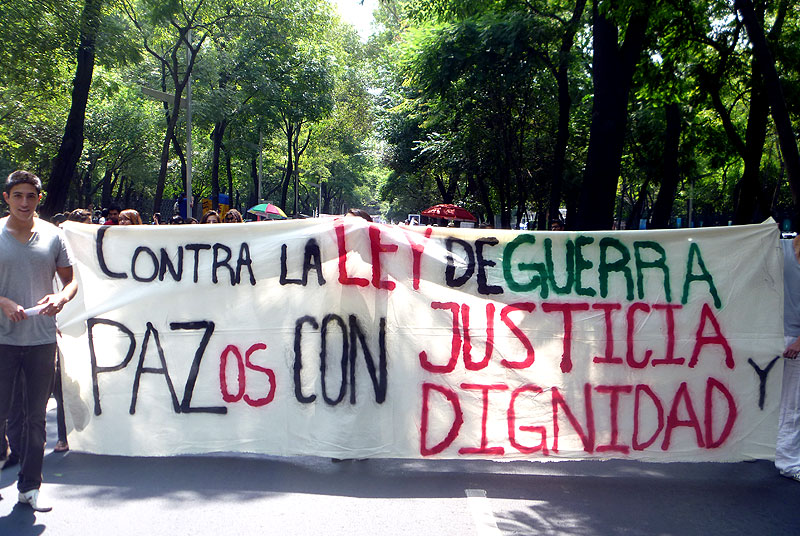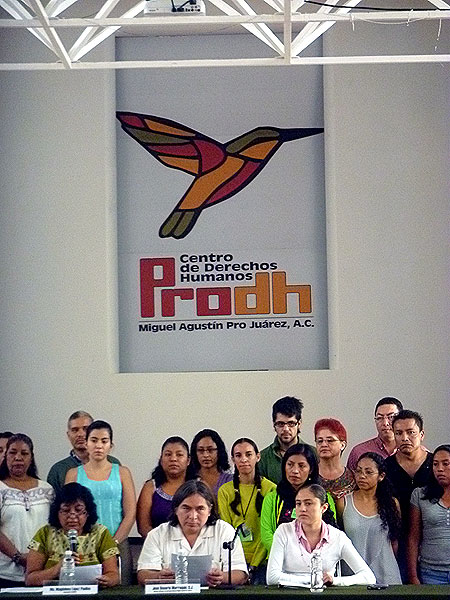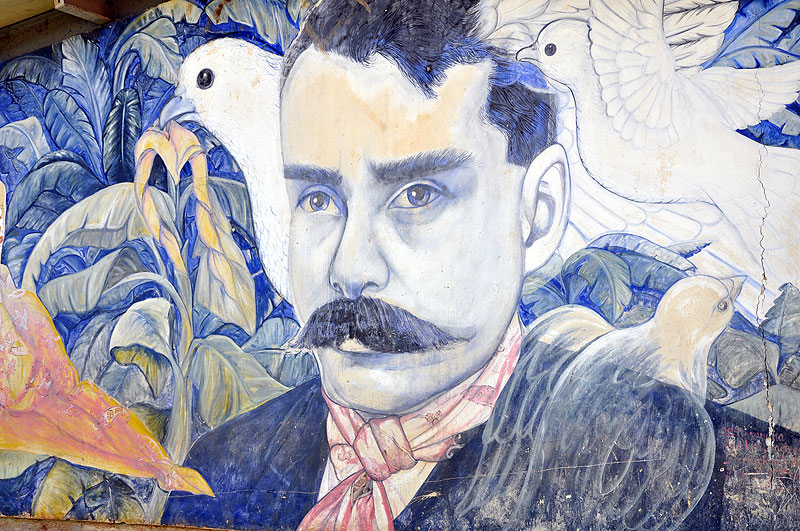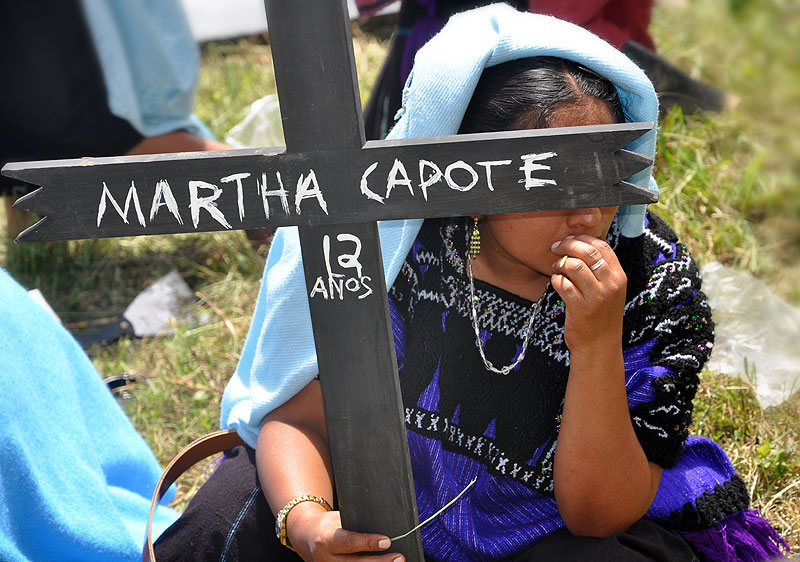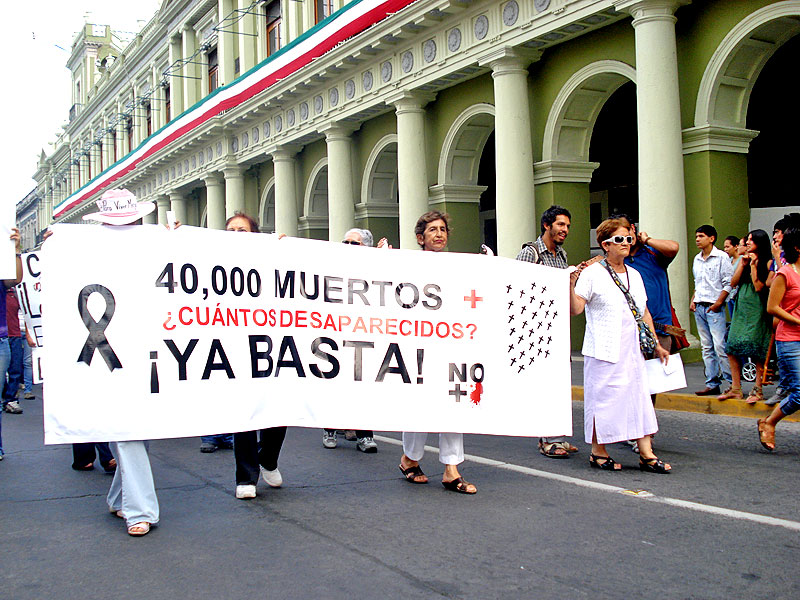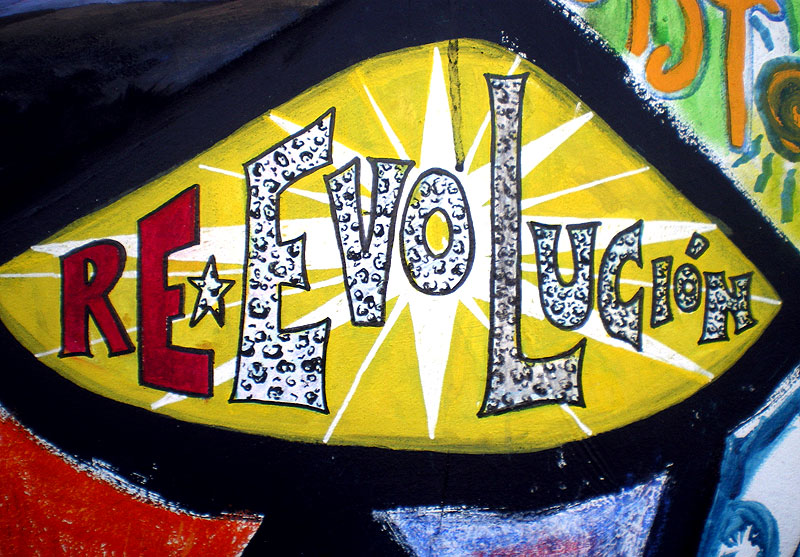SIPAZ Activities (From mid-February to mid-May 2011)
29/04/2011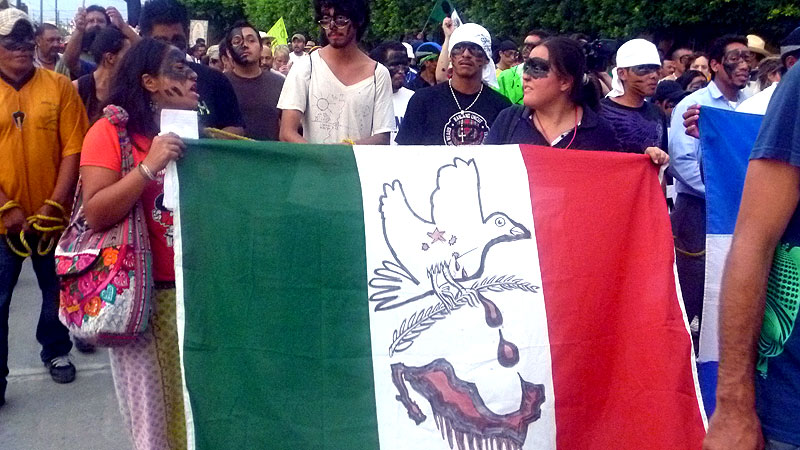
ANALYSIS : Mexico – National and international challenges to the consequences of the “War on Drugs” strategy
30/11/2011From 2 to 9 July, Navathem Pillay, United Nations High Commissioner for Human Rights, visited Mexico on a six-day trip. Upon concluding, she expressed special concern for the “increase in the reports of human-rights violations and excessive use of force by State agents in the development of their actions against organized crime” (it is said that there are more than 40,000 dead), as well as for the aggressions against migrants, human-rights defenders, and journalists, in addition to the situation experienced by indigenous peoples.
On 12 – 13 August, human-rights defenders and journalists met in Mexico City to hold their Fourth National Meeting. They noted a grave regression given the prevailing context of violence in the so-called war on drugs. Furthermore, they expressed their alarm in light of the contradictory messages from the State regarding its international obligations: response it has given to the National-Security Law, militarization, application of military tribunals in cases of rights-violations, repression, impunity, lack of observation of the sentences dictated by the Inter-American Court on Human Rights, among other things. They denounced having to find themselves permanently in a state of danger, given the increase in harassments, violent attacks, and even murders against them. Additionally, they reported that they find themselves facing slanderous campaigns and the use of the penal system to criminalize their work.
Those were two moments and two views of the same: the generalized deterioration of the present situation in the country in terms of human rights.
The Movement for Peace: and its ups and downs in its dialogue with authorities and civil society (see In Focus)
One of the catalysts of social discontent has been the Movement for Peace with Justice and Dignity that arose in April of this year. On 4 June it organized the Citizens’ Caravan for Peace with Justice and Dignity, also known as the “Caravan of consolation for the path of pain and blood.” In the seven days it lasted, more than 500 persons traveled nearly 3000 kilometers, from Cuernavaca to Ciudad Juárez. On 10 June the National Pact for Peace with Justice and Dignity in Ciudad Juárez was signed. The poet Javier Sicilia, who leads the Movement, warned the government that, if it did not take into account the points formulated in the Pact, there would be organized a regional civil-resistance movement that would seek to evade paying taxes and boycott the 2012 elections.
On 23 June, several members of the Movement met with President Felipe Calderón and members of his cabinet. Several voices had previously observed that such a meeting would end in failure, given that Sicilia’s movement sought to convince the government through dialogue to put an end to the situation of violence that also responds to economic and political interests of the group in power. Regardless, the group surrounding the poet succeeded in sitting down with the federal executive, to have him listen to the testimony of relatives of victims of the war on organized crime. This decision implied in any case a distancing from other civil-society groups on the question of negotiating with the government….
On 22 July, work-tables were initiated between the Movement and the federal government so as to deal with questions such as attention to cases of justice and a thorough going revision of the national-security strategy, among other things. The Movement suspended its dialogue on 9 August, following the approval of the draft of the National-Security Law, which in its view “would support authoritarianism and war.” On 14 August in Mexico City, thousands of persons mobilized against said legal proposal and to denounce the excesses of the war against drug-trafficking. In this regard, Javier Sicilia noted that “our movement is for peace, and this is not possible without dialogue.” For this reason, he announced that “regardless of the treason and lies of the legislators,” the Movement would re-initiate dialogue.
Legislative and judicial agenda: some advances, many risks
Regarding advances in terms of human rights, in May, a Constitutional Reform was passed with regard to Human Rights, one that many civil national and international organizations viewed as the most important step taken in this country on that matter for many decades. Javier Hernández, representative of the United Nations High Commissioner’s Office for Human Rights, noted that nevertheless other tasks are now pending, such as the approval of secondary laws.
Conveniently, considering that it had been discussed for several months, the Mexican government published a point of accord to establish the bases for a Mechanism for the Protection of Human-Rights Defenders precisely upon the visit of the UN High Commission for Human Rights. Several civil society organizations have welcomed the proposal, but they have pointed out deficiencies: there is a lack of defined conventions with the states as well as mechanisms to guarantee the participation of civil organizations and an inter-institutional budget for its implementation, among other concerns.
On 12 July, the Supreme Court for Justice of the Nation (SCJN) determined that human-rights violations committed by soldiers must be judged in civil courts. This decision is highly relevant in light of the deployment of tens of thousands of soldiers in the struggle against drugs, especially given the dramatic increase in the number of human rights denunciations. During the same session, the maximal tribunal for justice also concluded that all Mexican judges are obliged to analyze the compatibility of a given norm with regard to the national constitution and the international agreements signed by the Mexican State.
The approval and implementation of these types of resolutions and laws have not been had without a struggle. In July for example, the head of the Secretary of the Navy affirmed that delinquent groups seek to stain the good name of institutions by means of citizens’ groups and the banner of human rights, “toward the malevolent end of obstructing the participation of [these institutions] against them and thus open the country to their evil.” In light of such declarations, civil organizations suspended the dialogue they had with the government on the question of the mechanism for the defense of human rights defenders.
In legislative terms, the National-Security Law approved in general by the Commission of Governance of the House of Deputies has been highly rejected by human-rights specialists and organizations. They question in particular that it would establish “a civil-military regime with powers of exception for the Armed Forces, which would be permitted to intervene with no democratic control whatsoever in public-security matters and penal justice.”
It should be noted as well that all these discussions are being had within a pre-electoral context (federal elections are to take place in July 2012), one in which many actors have begun to play their cards for personal and/or party interests in a scenario that exceeds even the present.
Polemic surrounding U.S. intervention (ism) in Mexico
The U.S. government has been sustaining the war against organized crime launched by Felipe Calderón by means of providing resources and training, in particular—but not exclusively—via the “Mérida Initiative” (MI, since 2007). Despite the questionable results of the MI (detention of some leader narco-trafficking kingpins against more than 40,000 dead, 10,000 disappeared, and a flow of drugs that does not seem to dissipate), it has been reported that the United States seeks to continue increasing its economic aid.
Another point of comment was the naming of the new U.S. ambassador to Mexico, Earl Anthony Wayne, whose previous post was in the embassy of Kabul, Afghanistan—a move that reveals the diagnosis and proposed strategy of the U.S. for Mexico. Wayne has affirmed that he would give priority to the Mérida Initiative as being central to the relations between the two countries.
The intervention of the U.S. by means of the Mérida Initiative has been found to be interventionist by several analysts, in particular following the publication of an article published in the New York Times that suggests that the White House is sending a team of CIA agents and contractors to work with Mexican special forces. The daily paper noted in this same article “functionaries on both sides of the border say that they have designed new methods to suspend Mexican laws that prohibit that foreign military and police forces operate in Mexican territory.”
CHIAPAS: Contradictory signs
The principal point of conflict in the state continues to rotate around the question of land and territory. There have recently been a particularly high number of denunciations by the Zapatista Good-Government Councils (JBGs). In the majority of the cases, the conflicts purportedly originate in disputes over lands “recuperated” by the Zapatistas or involve threats of displacement from lands and rights. Armed attacks have been experienced in the case of communities pertaining to La Garrucha.
On 24 July, four prisoners were released from the San Sebastián Bachajón ejido, municipality of Chilón, who had been incarcerated in February following a confrontation regarding the control-point at the entrance of the Agua Azul waterfalls. The fifth prisoner, a minor, was released on bail somewhat earlier. The Fray Bartholomé de Las Casas Center for Human Rights declared that although the ejidatarios have recovered their physical liberty, they continue to be “prisoners” of a “unilateral process, with the police and the federal Army in its lands, facing governmental projects about which residents have not been consulted.”
Other actors beyond the Zapatistas and associated processes (given that the ejidatarios of Bachajón are adherents to the Other Campaign, an initiative convoked by the EZLN in 2005) have also been subjected to repression. At the end of May, residents of the Sustainable Rural City (CRS) Nuevo Juan de Grijalva, municipality of Ostuacán, denounced persecution and police harassment after they protested peacefully to demand that the government observe the promises it has made with relation to the landslide that destroyed their community close to the Grijalva River in 2007. Eight members of the community and their lawyer were imprisoned in April. Three months later, they were finally released in June. It should be noted that in the days before their release many media outlets published a series of critical notes referring to the situation of these prisoners and of others who were affected, as well as criticisms of the state-government’s CRS project altogether.
With regard to human-rights defenders and journalists, the most serious recent case has been the denunciation of at least three attempts on the vehicle of the parish priest of Chenalhó, Marcelo Pérez, “a priest committed to truth and justice,” in the words of the Las Abejas Civil Society. This led to the exchange of priests between Chenalhó and Simojovel. In other news, in a letter published in June, journalists Isaín Mandujano and Ángeles Mariscal summarized the harassment, calumnies, and surveillance to which they have been subjected by different authorities of the state-government of Chiapas in recent weeks. On 29 June, members of the House for the Rights of Journalists, A.C. met with the governor of Chiapas and members of his cabinet; the latter agreed to commit themselves to respecting the rights of journalists and to halt media attacks against them. In terms of human rights, an advance was had in June, when the Chiapas state Congress abolished the practice of arraigo (pre-charge detention, a precautionary measure whose application has been strongly challenged by the United Nations, jurists, and human-rights defenders.
In an event that some see as the beginning of the pre-electoral context (gubernatorial elections are to be held in August 2012) more than an advance against the struggle of impunity, Pablo Salazar Mediguchía, ex-governor of Chiapas (2000-2006) was arrested in June and transferred to the jail of El Amate (which he himself had constructed in 2005), accused of the crimes of embezzlement, inappropriate exercise of public office, and criminal complicity, among other charges. The Chiapas State Attorney General’s Office denied that this detention constituted political revenge on the part of present governor Juan Sabines (given that his differences with the ex-governor of Chiapas are clear). More generally, impunity is not challenged at all included in the most symbolic cases such as that of the Acteal massacre. In August, the Las Abejas Civil Society organized a Day of Action for Justice and Truth: “Acteal two years after the release of the paramilitaries by the Supreme Court of Injustice in the Nation; our memory lives; it struggles against impunity.”
OAXACA: Tasks for the government of Gabino Cué
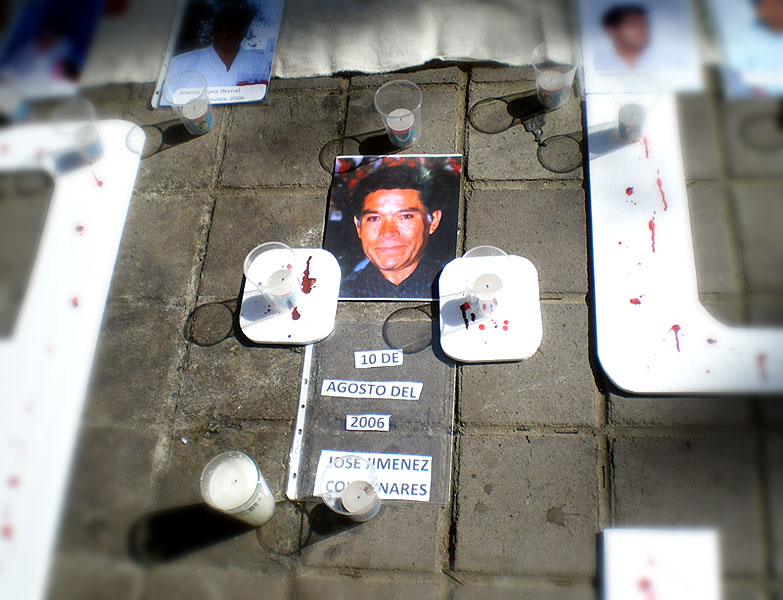
With regard to impunity, the possibility of an advance was opened at the beginning of July, when Lizbeth Caña Cadeza presented her resignation as a government official. Civil organizations demand the Public Ministry to open an investigation against her for her role as the head of the State Attorney General’s Office in the administration of governor Ulises Ruiz Ortiz (2004-2010). The Mexican League for the Defense of Human Rights (Limeddh), sustained that sufficient evidence exists to prosecute her for her responsibility in cases of arbitrary detentions, torture, forced disappearances, and extra-judicial executions during the social conflict of 2006. To date no line of investigation has been carried out in regard to this. On 10 August, another reminder of the lack of progress made in the struggle against impunity in the cases of violence linked to the politico-social conflict of 2006 was the coming together of 21 persons of different organizations to carry out a fast to demand justice in the case of the murder of José Jiménez Colmenares.
Another of the open fronts for the state government continues to be the conflictive relations with Section 22 of the National Union of Educational Workers (SNTE), which has increased the number of strikes, marches, and sit-ins in the historical center of Oaxaca de Juárezs. Section 22 consider the government responses to its claim list and its demands for justice in the cases of disappearances and murders of teachers are “insufficient and minimal.”
Another red alert that was reactivated in recent weeks was the ambush and murder of three Triqui indigenous individuals who were members of the Movement for Triqui Unification and Struggle-Independent (MULT-I) and residents of Agua Fría Copala. MULT-I attributed the triple homicide to the Movement for Triqui Unification and Struggle (MULT) and the Union for Social Welfare in the Triqui Region (Ubisort), which are respectively linked to the Popular Unity Party and the Institutional Revolutionary Party (PRI). MULT, MULT-I, and Ubisort have been disputing control over the region, leaving at least 500 persons dead in the past three decades.
In questions relating to land and territory, ejidatarios of Unión Hidalgo, Isthmus of Tehuantepec, denounced in June that they had been threatened by representatives of the Spanish firm Demex, who arrived with State Agents for Investigation (AEI), armed and aboard a truck with no license plate. These ejidatarios organized a protest due to the fact that Demex has not complied with what it offered in exchange for the leasing of their lands and to evade more environmental damage by the installation of a wind-energy plant there. This is only one example of a situation that Navathem Pillay (UNO) located within a more general problem when she manifested her worry during her recent visit to Oaxaca for the impact that development projects have in indigenous lands and territories of the country.
In more general terms, several analysts note that a great part of the present politico-social conflictivity in the state has been due to the repositioning of the PRI as an oppositional force following its 80 years in power; it continues to have a strong presence in the state Congress and in local government.
GUERRERO: Conflictivity continues; justice is awaited
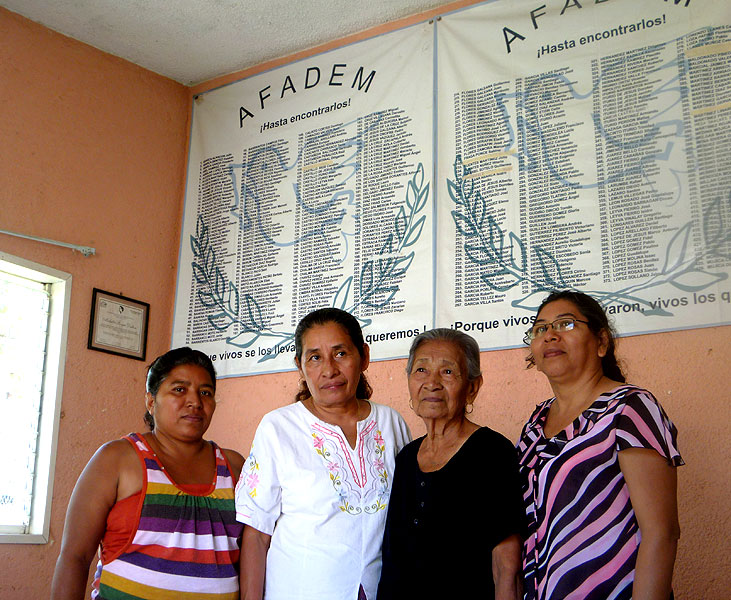
On 16 June, the Tlachinollan Mountain Center for Human Rights reopened its office in Ayutla de los Libres, following two years of its having been closed due to aggressions against it. They took this decision so as to continue defending the human rights in the region, despite their evaluation of the ongoing risks. Indeed, on that same day, Obtilia Eugenio Manuel y Cuauhtémoc Ramírez, directors of the Organization of the Me’phaa Indigenous People (OPIM), were threatened with death for continuing with their demand for the observance of the sentences that the Inter-American Court on Human Rights (IACHR) has dictated in the case of Valentina Rosendo Cantú and Inés Fernández Ortega, indigenous women who were raped by soldiers in 2002. This message, written by hand, extends the threat to Tlachinollan.
Two weeks later, the OPIM suffered a new harassment by legal means: one of its members, Rafael Rodríguez Dircio, a beneficiary of provisional measures granted by the Inter-American Commission on Human Rights (IACHR), was arrested on the same charges that were used to detain five members of the OPIM in 2008. One of them was Raúl Hernández Audio, a prisoner of conscience recognized by Amnesty International who was held in prison until August 2010. The judge in the case ruled in favor of Rodríguez’s release on 7 July in light of lack of evidence. Tlachinollan recalled that four other arrest-warrants against OPIM members exist for this same charge.
Meanwhile harassment directed against human-rights defenders in the zone of La Montaña continues; the situation of violence in the Sierra de Petatlán in the Costa Grande of Guerrero worsens with each passing day. In mid-May, 107 people had to abandon the community of La Laguna, municipality of Coyuca de Catalán, and took refuge in Puerto las Ollas, due to the wave of violence experienced in the area. They have decided to return to their community at the end of July. The Organization of Ecological Campesinos of the Sierra de Petatlán and Coyuca de Catalán (OCESP), declared that the problem of the Sierra de Petatlán consists of murders and death-threats against civilians, a situation to which the government has not provided action or response of any sort.
Very little progress has been seen in the Guerrero cases denounced before the IACHR in which the Mexican State has been sentenced. Regarding the case of Rosendo Radilla, who was forcibly disappeared in 1974 at the hands of the Army, the IACHR chastised the Mexican State in mid-June due to its lack of observation of the sentence handed down now a year and a half ago. In the cases of Inés Fernández and Valentina Rosendo, despite the few advances in the work-tables on reparation of damages, the Military Attorney General’s Office (PGJM) notified both Me’phaa women on 12 August that their cases have been transferred to the Federal Attorney General’s Office (PGR)—a civilian court—which was one of their most central demands.

